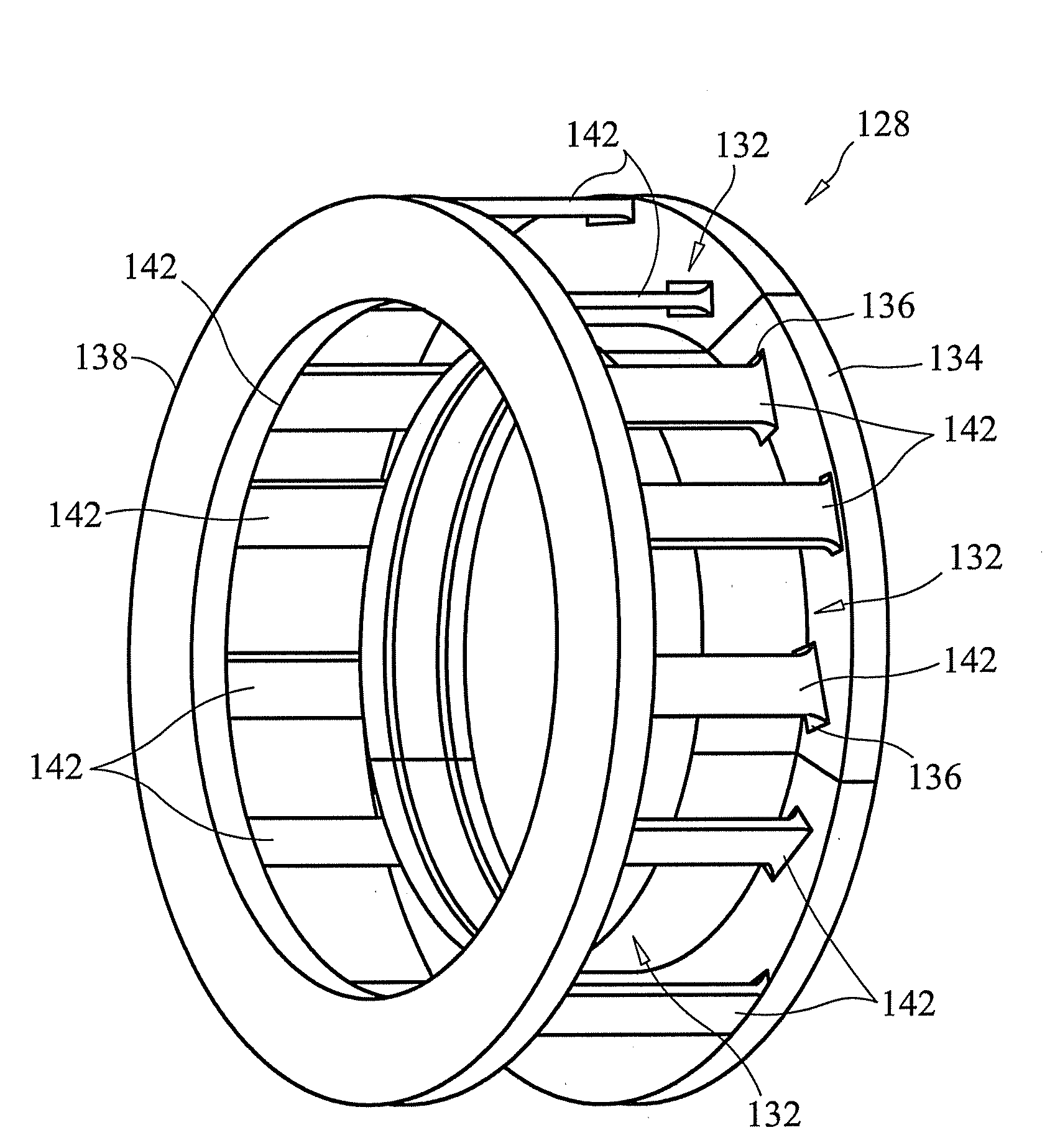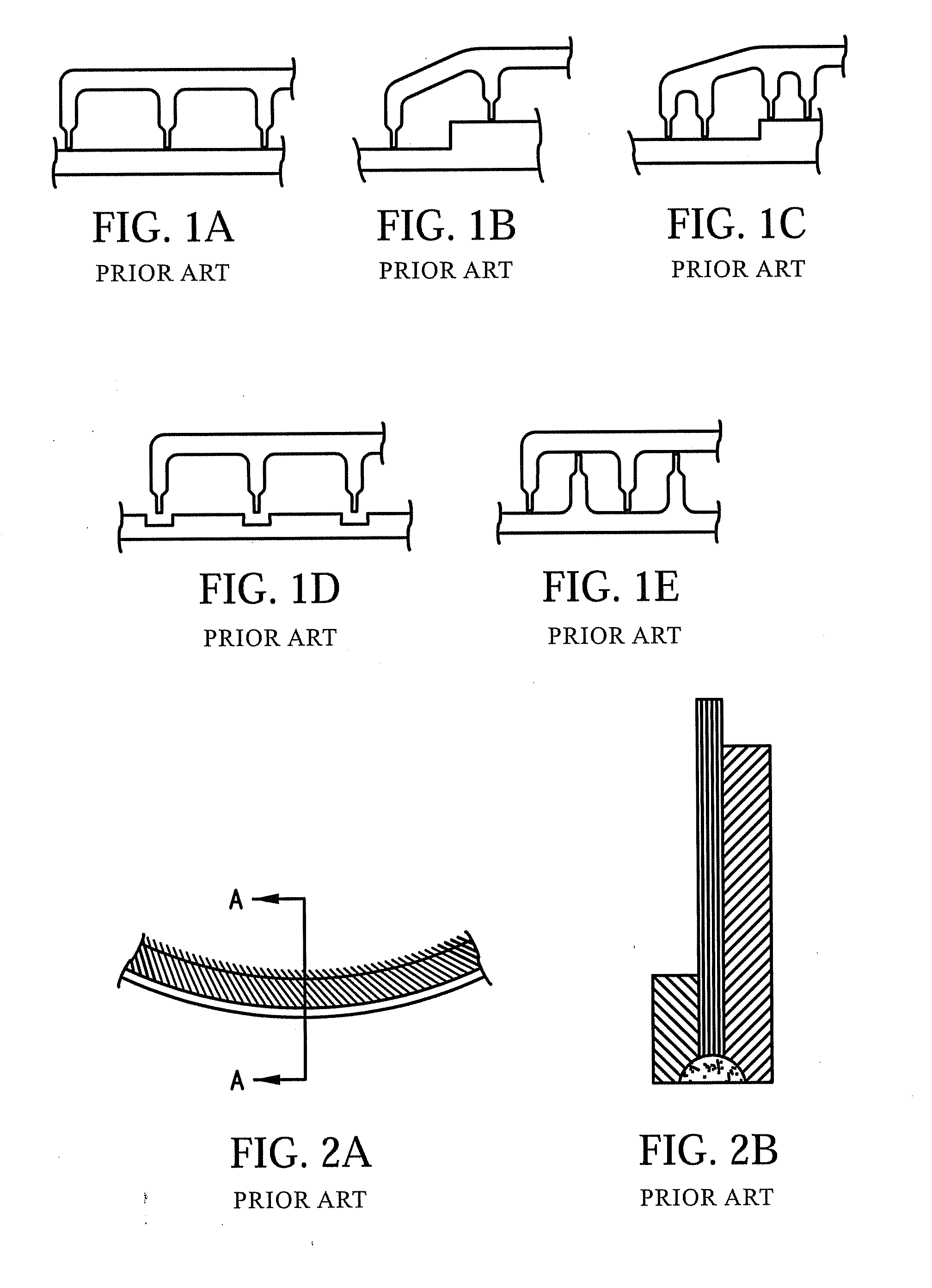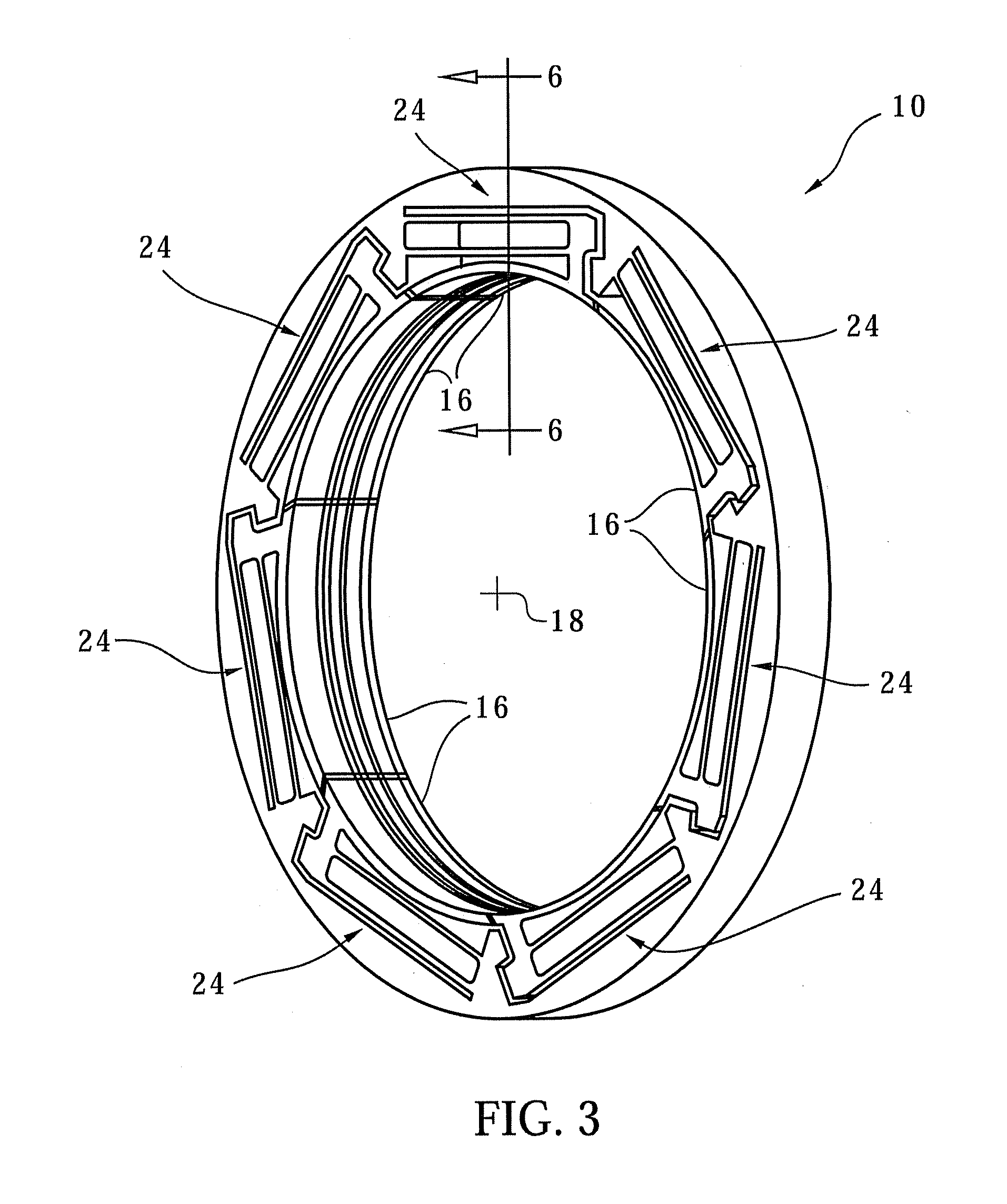Non-contact seal for a gas turbine engine
a gas turbine engine and non-contact technology, applied in the field of seals, can solve the problems of excessive engine vibration, increase in engine vibration, carryover effect, etc., and achieve the effect of preventing the rollover of shoes, effective sealing, and improving clearance control
- Summary
- Abstract
- Description
- Claims
- Application Information
AI Technical Summary
Benefits of technology
Problems solved by technology
Method used
Image
Examples
Embodiment Construction
[0032]Referring initially to FIGS. 3-6, the hybrid seal 10 of this invention is intended to create a seal of the circumferential gap 11 between two relatively rotating components, namely, a fixed stator 12 and a rotating rotor 14. The seal 10 includes at least one, but preferably a number of circumferentially spaced shoes 16 which are located in a non-contact position along the exterior surface of the rotor 14. Each shoe 16 is formed with a sealing surface 20 and a slot 22 extending radially inwardly toward the sealing surface 20. For purposes of the present discussion, the term “axial” or “axially spaced” refers to a direction along the longitudinal axis of the stator 12 and rotor 14, e.g. axis 18 shown in FIGS. 3 and 10A-10G, whereas “radial” refers to a direction perpendicular to the longitudinal axis 18.
[0033]Under some operating conditions, particularly at higher pressures, it is desirable to limit the extent of radial movement of the shoes 16 with respect to the rotor 14 to ma...
PUM
 Login to View More
Login to View More Abstract
Description
Claims
Application Information
 Login to View More
Login to View More - R&D
- Intellectual Property
- Life Sciences
- Materials
- Tech Scout
- Unparalleled Data Quality
- Higher Quality Content
- 60% Fewer Hallucinations
Browse by: Latest US Patents, China's latest patents, Technical Efficacy Thesaurus, Application Domain, Technology Topic, Popular Technical Reports.
© 2025 PatSnap. All rights reserved.Legal|Privacy policy|Modern Slavery Act Transparency Statement|Sitemap|About US| Contact US: help@patsnap.com



